Kids love Japan, once they get their head around the different bedtime, bath time, and breakfast, finds mum-of-boys Kate Wickers.
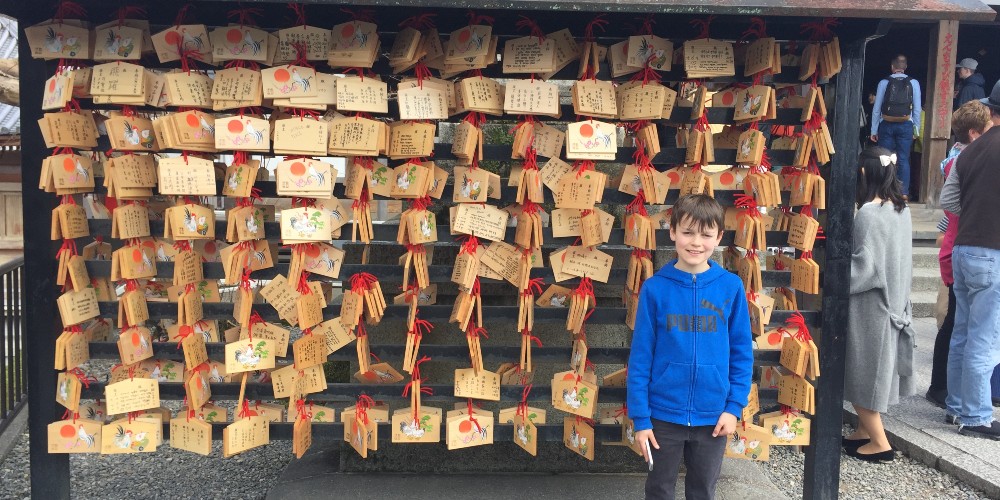
Freddie with Ema, Kinkaku-ji, Kyoto
Kids can’t get enough of Kyoto
It’s cherry blossom season when we arrive in Kyoto, fresh off the Shinkansen bullet train from frantic Tokyo. Year round, this is a city that lives in accord with nature, where gardens, woods and bamboo forests, blend with temples, pagodas, shrines, as well as family homes. But only from mid-March to the end of April does it burst into colour, awash with pink and white blooms.
This sight was the stuff of travel bucket lists for me, and I wasn’t the only one. The city’s cherry trees, its ancient history and cinematic qualities, lure thousands of foreign visitors and Japanese tourists too. They flock here to enjoy the annual sakuru (cherry blossom knees up), posing in the prettiest spots to take selfies, as the breeze fills the air with bursts of confetti and the Kamo River, which flows through the city centre, is softly blanketed in pink. Luckily, with more than 500 cherry trees, even in high season there’s more than enough selfie backdrops to go round.
Minding our manners the Japanese way
Japan had long captured my imagination, from my obsession with the 1980s pop band Japan, to the excitement over my very first revolving food-belt experience in 1997. However, of all the places I’d travelled to with my three boys, I was a little worried about the potential for cultural faux pas. I’d researched rules of social etiquette and gave the boys a briefing.
They were never to sit with their legs open, but instead slant their legs and feet to the right (straight towards a person was an omen of death); they were never to eat or drink in public while walking; never to leave their chopsticks pointing upwards in their bowls; never to raise their voices in public; and (oh, how I loved this one) being a picky eater was considered very disrespectful. Okay, I thought, let’s see how we get on.

Japanese Onsen tradition takes a bit of getting used to
You’re never too young to spa in Japan
Our base in Kyoto was Ryoso Chatani, a traditional ryokan inn and I revelled in the simplicity of it all, our communal family bedroom only furnished with a tatami mat floor, a low table, chairs without legs, and futons to be unfurled at bedtime. We were each given a yukata (cotton kimono), along with flip-flop style slippers and a strange pair of socks, with a separate sleeve for your big toe – cleverly designed to wear with thonged footwear – which Freddie enthusiastically pulled on, calling them his ‘glove socks’.
Typical of all ryokan, were the single-sex communal baths (more like a boutique spa), fed by natural thermal springs. At the entrance we were each handed two essential bits of kit by the attendant – a flannel sized towel and some body wash.
“This is the smallest towel ever. How can you dry yourself with that?” Josh wanted to know.
I knew the score. This was a special, rather intimate little towel, used for covering one’s privates.
“Must go naked please,” the attendant stated bluntly.
“What? No way!” my three sons chimed, doing a swift about-turn. However, after a day, “No way,” was replaced with, “Okay, but first check that no one is there.” With my husband Neil left to supervise, the chance to bathe in peace in these steamy mineral water pools was a daily ritual I looked forward to.
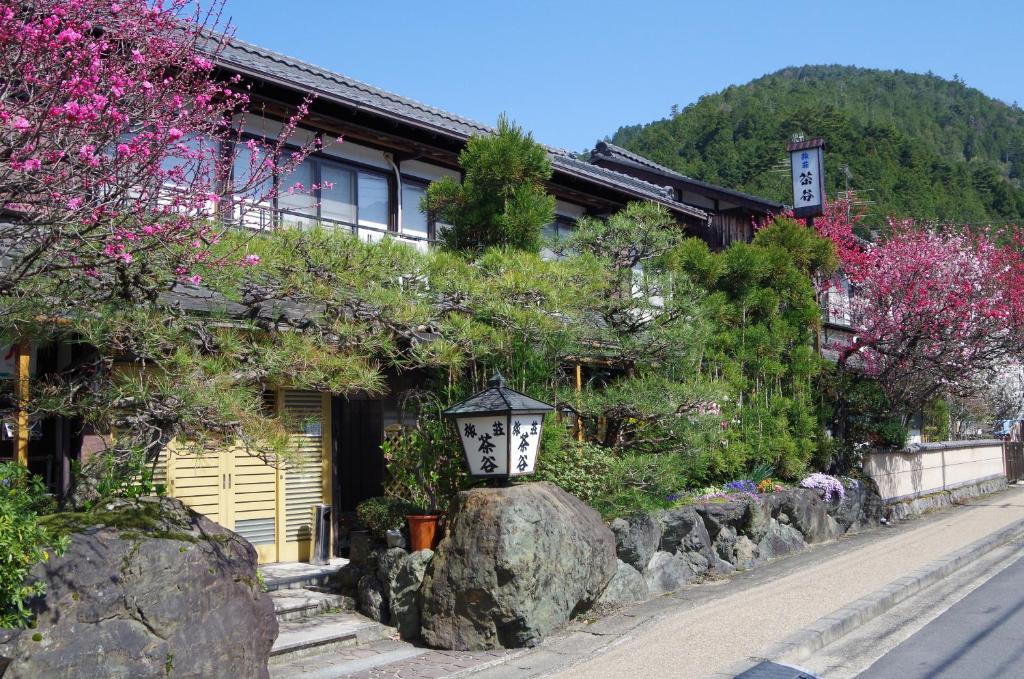
Ryoso Chatani, Ryokan Inn, Kyoto
Breakfast gets lost in translation
Even for the most seasoned traveller, Japan throws regular curve balls. Our second came at breakfast the next day as my sons sniffed suspiciously at the small bowls that had been set before them, while I reminded them that being a fussy eater was considered very rude.
“What even is that?” asked Ben. It was so hard to tell. We identified pickled vegetables and a miso-broth, smoked fish and dried egg mixed with what we suspected might be seaweed, but several other dishes left us perplexed.
“Er, excuse me,” I ventured to the waitress. “Could you tell me what these are?” As the ensuing conversation was straight out of the film Lost in Translation, I eventually ended up hissing, “Just eat it” at them all.
Book a family stay at Ryoso Chatani in Kyoto
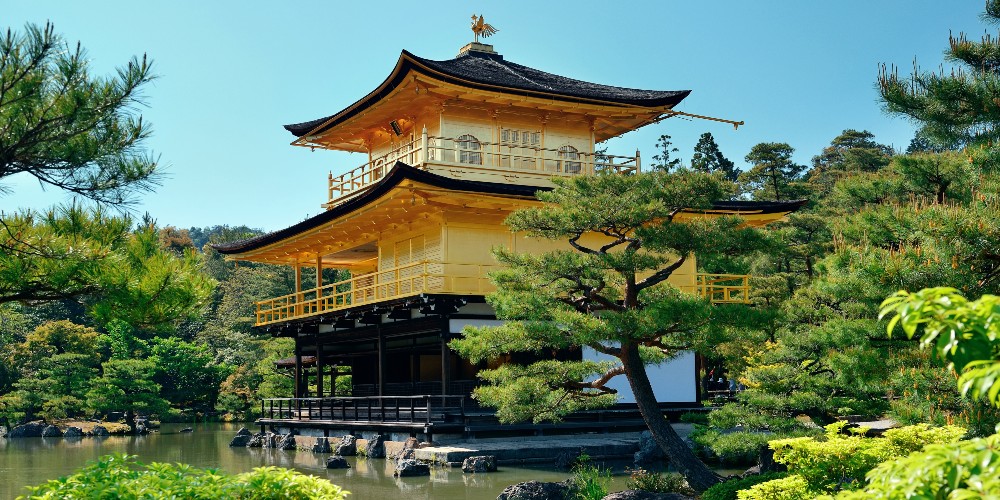
Kinkaku ji Golden Pavilion temple, Kyoto
How to love being a tourist in Kyoto
Kiyomizu-dera is Kyoto’s most flamboyant shrine and everything you’d imagine a temple not to be – noisy, full of souvenir hawkers, and with some unusual side attractions. We drank (or at least pretended to) from the fountain of sacred river water to ensure good health and longevity and then parted with our yen to buy an omikuji fortune scroll. On Josh’s there was a warning about not studying hard enough. “Did you fix this, Mum?” he asked suspiciously.
We all reached for our sunglasses on arrival to the golden pavilion temple of Kinkaku-ji in northwest Kyoto. Built against a background of deep green fir and pine, on sunny days the gold-plated exterior is doubly dazzling, reflected in the still waters of the adjoining lake. In the same area is the more understated Tenryu-ji, with its 14th-century zen garden, freshly raked into perfect swirls; the only interruption to the precision is caused by wayward cherry blossom petals scattered by the breeze.
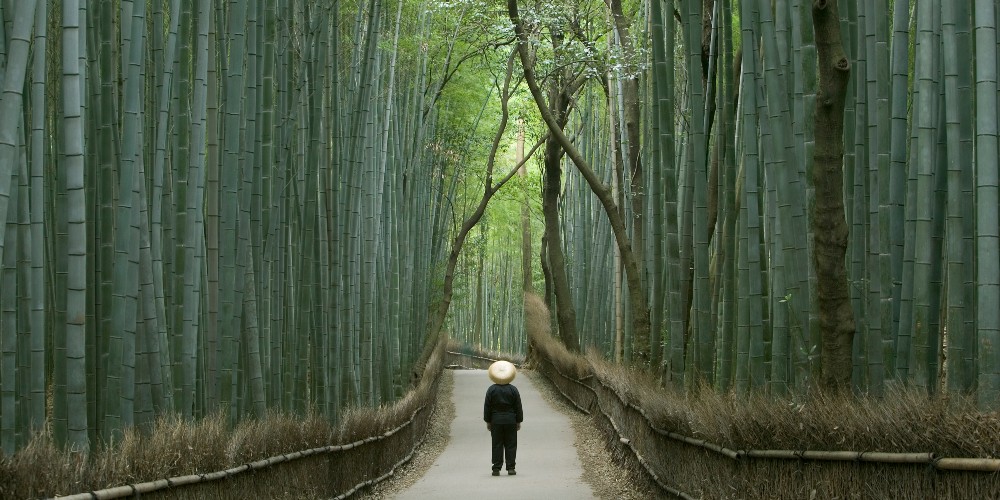
Perspective on giant bamboo forests, Kyoto
Discover the gardens of Kyoto with kids
We took a sun-filtered walk through a bamboo grove, listening to the creak of the immense green stems, some 30m high, to the former estate of Okochi Denjiro, the famous Samurai star of the silent screen. While Freddie tried out a few Samurai/Ninja moves, we traversed the garden trails, littered with mossy stones, and planted with acacia, bonsai, and azalea, all with far-reaching views to Kyoto on one side and to Mount Hiei on the other.
Tea, included in the price of entry, was served in a tea house next to the actor’s former 1930s wooden home, considered one of the most beautiful of the era with its gently swooping thatched roof and large veranda.

Street stalls, Kiyomizu Dera, Kyoto
Out and about and how to eat with kids
Back in downtown Kyoto it was a rowdier scene. The streets around Kiyomizu-dera were packed with revellers and filled with stalls selling seasonal cherry confectionery of a garish pink hue. Kyoto isn’t short on costume hire shops and in line with the Japanese obsession with cosplay (the practise of dressing as a character from a film, book, or video game), being a geisha for the day is popular.
We all felt a little sorry for the awkward-looking young Japanese men, who, to keep their girlfriends happy, had been forced to don traditional attire. “What is he wearing? You wouldn’t catch me in that!” I heard Josh exclaim.
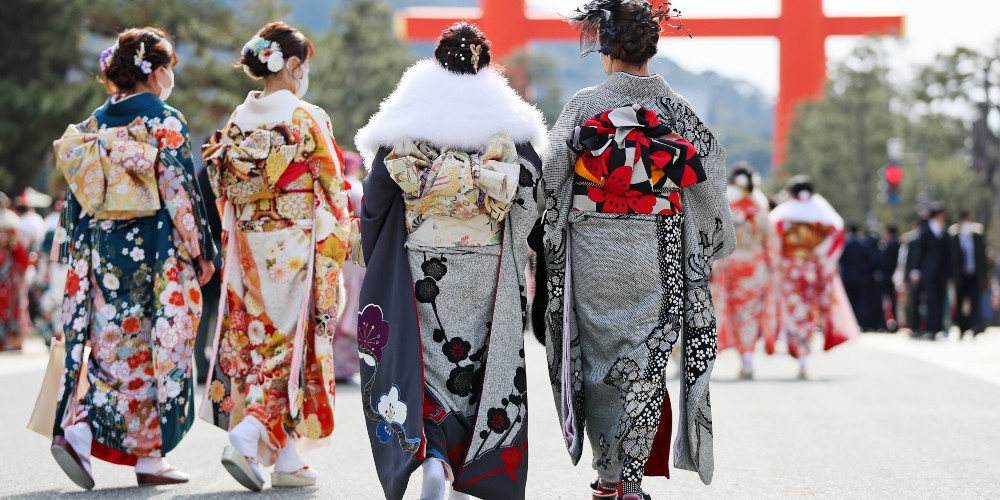
Tourists dressed in traditional Kimono, Kyoto
For dinner we played it safe, heading to Gion, the Geisha district, in search of a Japanese speciality, Kobe steak (tenderly massaged Wagyu beef from Japanese Black cattle). Through atmospheric, dimly lit, cobbled streets, lined with machiya wooden townhouses and teashops, we wandered, catching the occasional glimpse of geisha scurrying to their duties in elaborate gowns, their white faces glowing by lantern light.
We dined at Niyama Kiyamachi, a teppanyaki-style restaurant, where the food was cooked on hot plates before us. For novelty factor alone it was a hit and our supper, to the relief of us all, was delicious and discernible – melt in the mouth strips of beef, served with rice and no more. Although, it wasn’t all plain sailing. During dinner, our conversation went something like this:
Me: “Put your chopsticks on the rest not in the bowl.”
Josh: “Oh, sorry.”
Me: “Don’t point with your chopsticks, Freddie!”
Freddie: “Sorry Mum.”
Me: “Ben, sit properly.”
Ben: “Mum, keep your voice down!”
It appeared we all still had much to learn.

Inari fox guardians, Kyoto
Of all Kyoto’s temples, the Inari Shrine was the most captivating. A four-kilometre ascent took us through arcade after arcade of 10,000 vermillion lacquered torii (Shinto shrine gates) to the summit of a thickly wooded hill. En route, we played ‘spot the fox’ as the animal is believed to be the messenger of the Inari (God of rice and agriculture), and their likeness is found on everything from shrines to sweet tsujiura senbei, the forerunner to the popular fortune cookie, which we snacked on as we climbed.

Making free with the art in Hokane
Catch the bullet train to Mt Fuji
Moving on the next day, the mountain resort of Hakone delivered us an entirely different scene, nestling in the foothills of Fujisan (Mt Fuji), three hours by bullet train from Kyoto. We arrived to find snow on the ground and to discover that the cherry tree buds here were in less of a hurry to bloom than in the rest of Japan.
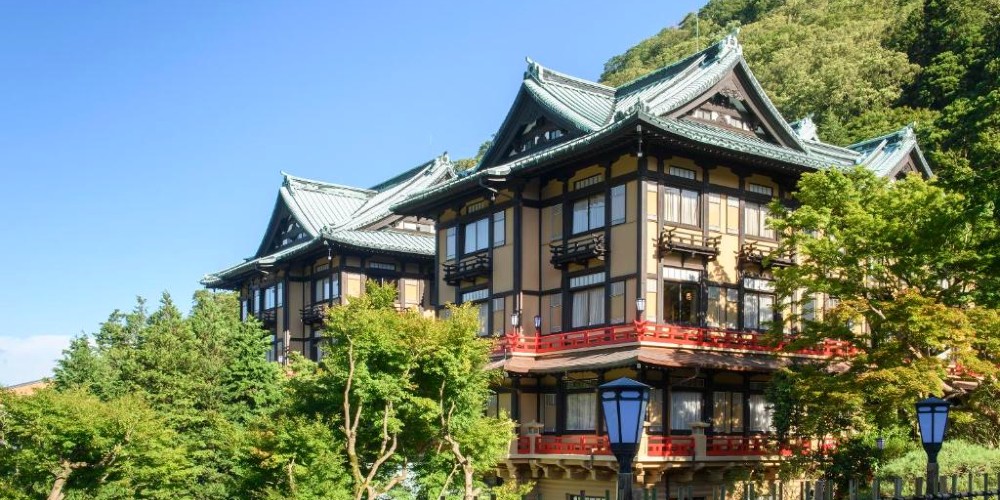
Venerable 5-star Fujiya Hotel, Hakone, Japan
Fujiya Hotel opened in 1878 and retains the old-world elegance that made it once popular with the likes of Charlie Chaplin, and here we booked into two adjacent rooms. Most tourists come to Hakone to hike the woodland trails and enjoy the 16 onsen hot spring baths, many of which lie within their original leafy natural setting, but the resort has a few other surprising attractions.
The Open-Air Museum is found in a mossy, rolling, hillside setting, where sculptures by Rodin, Miro, and Moore sprawl alongside more interactive installations such as Symphonic Sculpture, and Fried Egg objet d’art, on to which kids are free to clamber and explore.
Book a family stay at Fujiya Hotel in Hakone
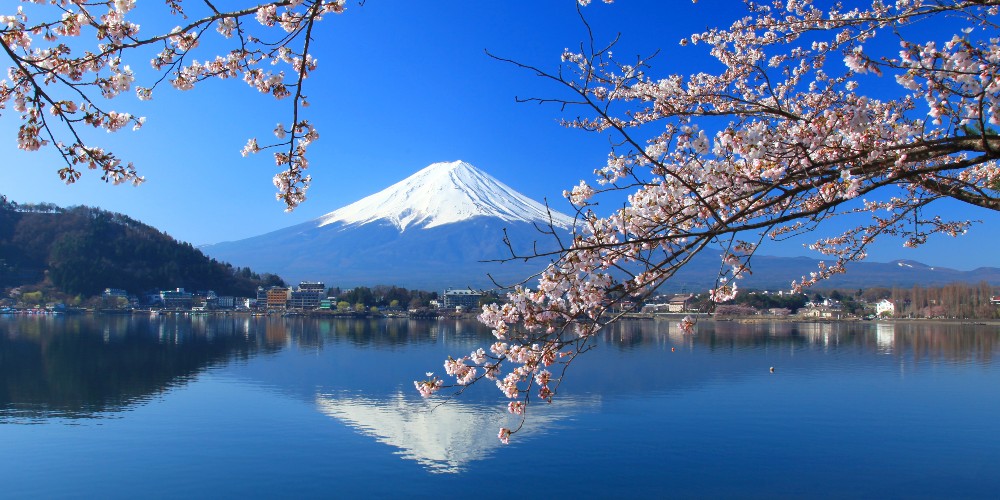
Iconic Mount Fuji and cherry blossom, Japan
Ticking icons off our Japan to-do list
With snow-boots pulled on, we followed in icy footprints to Yunessun, the most family-friendly of onsen, with its outdoor water slides. No need to worry about nudity here as bathing costumes must be worn (“Thank God,” I heard Ben mutter), and the boys had a riot dipping in and out of the rotemburo (pools), of varying temperatures, favouring the outside ones bordered by snow and veiled in steam, which we dared each other to run barefoot between.
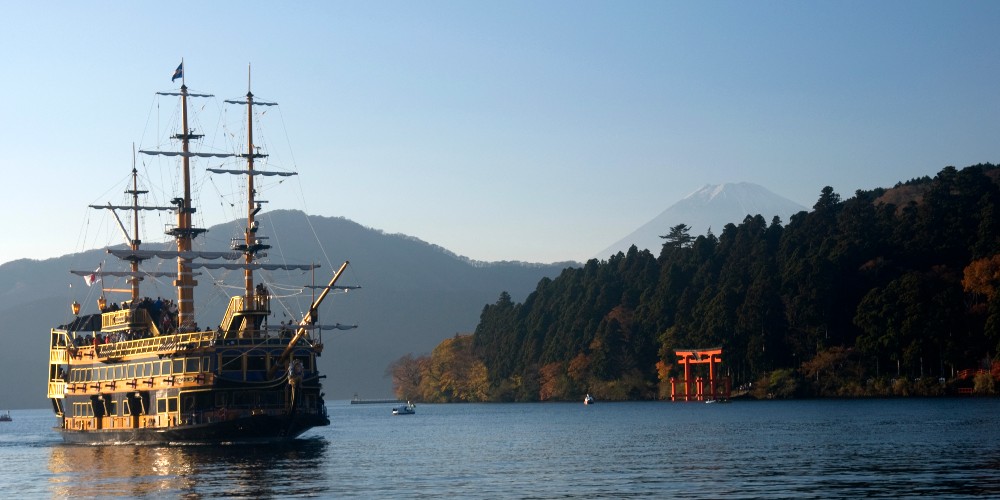
Tori Gate, Hakone, Japan
Mt Fuji’s peak is often shrouded in cloud, so on a rare clear day – as this was – visitors rush to Hakone’s lake to board pleasure cruisers for the best vantage points. “Looks like a postcard,” commented Freddie, and it did, soaring against the blue. With Hakone’s iconic huge red torii gate rising from the water in the foreground, this is one of the most iconic scenes in Japan. In the warmth of this unexpected sunny day, Hakone’s cherry tree buds began to unfurl, and the mountain sides blushed pink in springtime pleasure. After all our efforts to understand Japanese etiquette this trip, it was Japan that gave us this greatest courtesy of all.
This article contains affiliate links. We may earn commission when you click on them. This does not influence our editorial standards. We only recommend products and services we believe will enhance your family travel experience.

